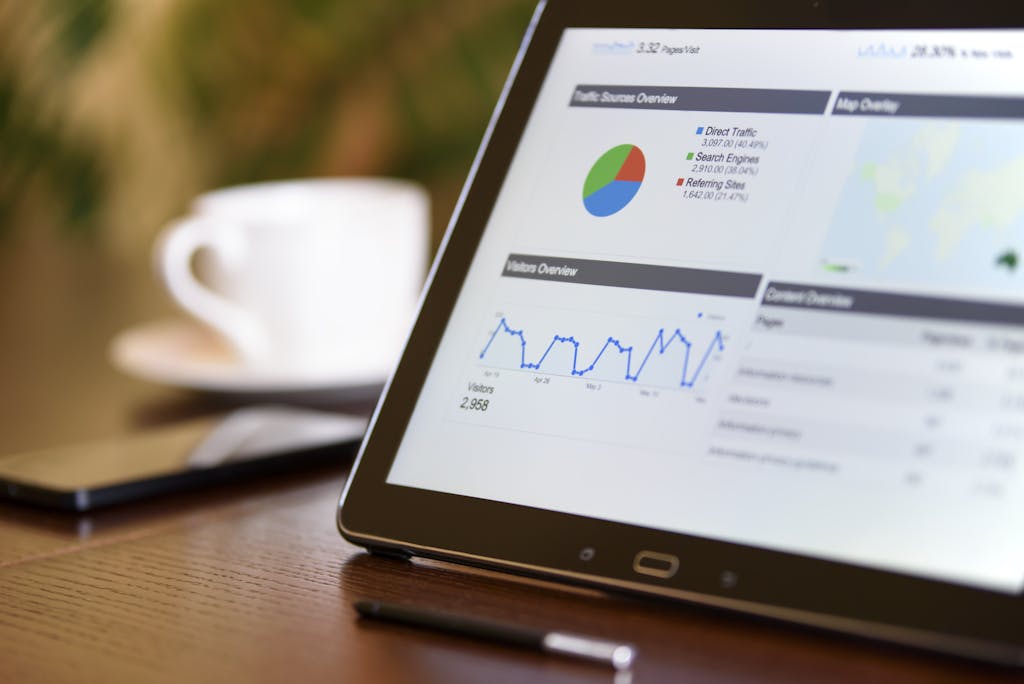Mastering Email Marketing Metrics and Reporting Features
Email marketing is a powerful tool in any marketer’s arsenal. But how do you know if your campaigns are hitting the mark? By leveraging the right metrics and reporting features, you can transform your email strategy from good to great. This guide will break down the essential metrics and reporting features that will help you track performance and optimize your campaigns for maximum impact.
Analytics for Tracking Performance
The first step in any successful email marketing campaign is understanding how well it’s performing. Analytics provides the backbone for tracking various metrics that reveal the effectiveness of your campaigns.
Key Metrics to Track
- Open Rates: This indicates the percentage of recipients who opened your email. A higher open rate means your subject lines are compelling.
- Click-Through Rates (CTR): This metric shows the percentage of recipients who clicked on one or more links within your email. A higher CTR suggests your content is engaging.
- Conversion Rates: This metric measures the percentage of users who completed the desired action after clicking through your email, such as making a purchase or signing up for a webinar.
- Bounce Rates: This refers to the percentage of emails that could not be delivered. A high bounce rate can indicate issues with your email list quality.
- Unsubscribe Rates: This metric tells you how many people opted out of your email list. A spike in this number can be a sign that your content is not resonating with your audience.

Why Analytics Matter
Tracking these metrics provides insights into what’s working and what’s not. By regularly reviewing your performance analytics, you can make informed decisions to improve future campaigns. Whether you’re trying to refine your content or adjust your targeting, analytics help you stay ahead of the curve.
Real-Time Reporting
In today’s fast-paced digital landscape, real-time reporting is essential for effective email marketing. It allows marketers to access up-to-the-minute data about their campaigns, enabling quick adjustments and decisions.
Benefits of Real-Time Reporting
- Immediate Insights: Real-time reporting provides instant access to key metrics. You can quickly gauge how a campaign is performing and respond to trends as they happen.
- Dynamic Adjustments: If you notice that a particular email subject line is driving higher open rates, you can adjust your strategy on the fly, perhaps testing similar lines in subsequent campaigns.
- Engagement Monitoring: By tracking user engagement in real-time, you can identify which segments of your audience are most responsive. This allows for more targeted follow-up campaigns.
- Enhanced Decision-Making: Quick access to performance data enables data-driven decisions, minimizing reliance on guesswork and intuition.
Dashboard Overview
A well-designed dashboard is essential for any email marketer. It provides a centralized view of all relevant metrics and analytics, making it easier to track campaign performance at a glance.
Key Features of a Good Dashboard
- Customizable Layout: Different marketers have different needs. A good dashboard should allow customization to highlight the metrics most relevant to your campaigns.
- Visual Representation: Data should be presented visually through charts and graphs, making it easier to identify trends and insights.
- Accessibility: Ensure your dashboard can be accessed on various devices. Whether you’re at your desk or on the go, you should have access to important metrics.
- Integrated Data Sources: A great dashboard integrates data from multiple sources, providing a holistic view of your marketing efforts, including social media, website analytics, and CRM data.
Campaign-Level Reporting
When running multiple campaigns, understanding the performance of each one is crucial. Campaign-level reporting allows marketers to assess the success of individual campaigns, making it easier to optimize future efforts.
What to Include in Campaign-Level Reports
- Overview of Metrics: Include essential metrics like open rates, CTR, conversion rates, and bounce rates for each campaign.
- Comparative Analysis: Compare the performance of similar campaigns over time to identify patterns and trends. This helps in understanding what resonates with your audience.
- Audience Segmentation Insights: Analyze how different audience segments respond to various campaigns. This can inform your targeting and content strategies moving forward.
- Timing Insights: Track the timing of your campaigns to determine when your audience is most likely to engage.
Subscriber-Level Activity
Understanding how individual subscribers interact with your emails can provide invaluable insights into your audience’s behavior and preferences. Subscriber-level activity tracking allows marketers to tailor their strategies accordingly.
Benefits of Subscriber-Level Activity Tracking
- Personalization Opportunities: By understanding how individual subscribers interact with your emails, you can create more personalized content that resonates with them.
- Segmentation: Use subscriber-level data to segment your audience based on their engagement levels. For example, frequent engagers can receive exclusive offers, while less engaged users can be nurtured with different content.
- Re-Engagement Strategies: Identify subscribers who have not engaged with recent campaigns. Tailor re-engagement strategies specifically for these users to win them back.
- Lifecycle Tracking: Monitor subscribers’ journeys over time. This helps in identifying where they may drop off and allows for timely interventions.
Advanced Analytics
While basic metrics are essential, advanced analytics take your email marketing to the next level. These tools provide deeper insights into subscriber behavior and campaign performance.
Features of Advanced Analytics
- Predictive Analytics: This uses historical data to forecast future behaviors. For example, it can predict which subscribers are likely to convert based on past interactions.
- A/B Testing Insights: Advanced analytics can help analyze the results of A/B tests, providing clear insights into which variations perform best.
- Trend Analysis: Identify long-term trends in subscriber behavior. This can guide strategic decisions about content, timing, and targeting.
- Attribution Models: Advanced analytics can help in understanding which marketing channels contribute most to conversions, giving a clearer picture of ROI.

Heatmaps
Heatmaps are an exciting way to visualize how subscribers interact with your emails. They show where users click within your email, allowing for a more nuanced understanding of engagement.
Why Use Heatmaps?
- Visual Insights: Heatmaps provide an easy-to-understand visual representation of user behavior. This makes it simple to see what elements of your emails are capturing attention.
- Content Optimization: By identifying which areas of your emails receive the most clicks, you can optimize future content layouts to maximize engagement.
- A/B Testing: Use heatmap data to inform A/B testing decisions. For example, if certain call-to-action buttons receive more clicks, consider featuring them more prominently in future emails.
- User Behavior Understanding: Heatmaps can help you understand how subscribers read your emails. For instance, if users frequently click on images, consider incorporating more visuals in your campaigns.
ROI Tracking
Return on Investment (ROI) is the ultimate measure of a campaign’s success. Tracking ROI for your email marketing campaigns is crucial to understanding their effectiveness and justifying budget allocations.
How to Track ROI
- Define Success Metrics: Determine what success looks like for each campaign. Is it sales, lead generation, or something else? Establish clear metrics that align with your goals.
- Track Costs: Keep a detailed account of all costs associated with your campaigns, including design, software, and personnel expenses.
- Calculate Returns: Measure the revenue generated from your email campaigns. This can include direct sales and lead conversions.
- Use ROI Formulas: The basic ROI formula is (Net Profit / Cost of Investment) x 100. This provides a clear percentage that reflects your campaign’s success.
Multi-Channel Attribution
In today’s marketing landscape, customers interact with multiple channels before making a purchase. Multi-channel attribution helps marketers understand how different channels work together to drive conversions.
Importance of Multi-Channel Attribution
- Holistic View of Customer Journeys: Understand the entire path a subscriber takes from first interaction to conversion. This helps in optimizing marketing efforts across channels.
- Resource Allocation: Knowing which channels contribute most to conversions allows for smarter budget allocation. Invest more in channels that yield higher returns.
- Campaign Optimization: By understanding how different channels impact one another, you can create more cohesive and effective multi-channel marketing strategies.
- Improved Targeting: Insights gained from multi-channel attribution can inform better audience targeting across channels, leading to more personalized and effective campaigns.
Comparative Campaign Analysis
Comparative campaign analysis is a powerful way to evaluate the performance of different campaigns over time. By comparing various metrics across campaigns, marketers can identify best practices and areas for improvement.
How to Conduct Comparative Analysis
- Select Metrics: Determine which metrics are most important for your analysis. This could include open rates, CTR, conversion rates, or ROI.
- Establish a Time Frame: Choose a specific time frame for your analysis. This could be quarterly, monthly, or based on specific campaign launches.
- Visual Representation: Use charts or graphs to visually compare the performance of different campaigns. This can help identify trends and anomalies more easily.
- Identify Patterns: Look for common patterns or themes in high-performing campaigns. This can inform your future strategies and content development.
- Iterate and Optimize: Use the insights gained from comparative analysis to make informed decisions about future campaigns. Continuously iterate based on what works best.
Conclusion: Elevate Your Email Marketing with Metrics and Reporting
Email marketing is a dynamic and powerful tool. However, success requires a deep understanding of performance metrics and reporting features. By utilizing analytics for tracking performance, real-time reporting, dashboard overviews, campaign-level reporting, subscriber-level activity, advanced analytics, heatmaps, ROI tracking, multi-channel attribution, and comparative campaign analysis, you can transform your email







